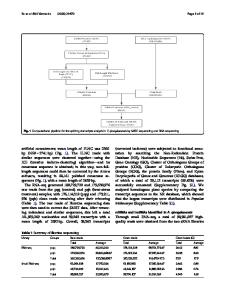Heat generation associated with pressure-induced infiltration in a nanoporous silica gel
- PDF / 238,181 Bytes
- 5 Pages / 612 x 792 pts (letter) Page_size
- 40 Downloads / 235 Views
As a liquid moves in the nanopores of a silica gel, because of the hysteresis of sorption behavior, significant energy dissipation can take place. Through a calometric measurement, the characteristics of associated heat generation are investigated. The temperature variation increases with the mass of silica gel, which consists of a reversible part and an irreversible part. The residual temperature change is about 30% to 60% of the maximum temperature increase and can be accumulated as multiple loading cycles are applied.
I. INTRODUCTION
The recent development of nanoporous materials has provided a novel energy-absorption mechanism for highperformance protection and damping systems.1–4 When nanoporous particles are immersed in a liquid phase, if the nanopore surfaces are wettable, the liquid would enter the nanopores spontaneously, so that the system free energy decreases.5 The free-energy change can be estimated as ⌬U ⳱ ⌬␥⭈A, where ⌬␥ is the solid–liquid interfacial tension and A is the nanopore surface area. This phenomenon has been widely applied for separation and purification, chemical sensing, catalysis, etc.6,7 If the nanopore surfaces are nonwettable, an external pressure needs to be applied to trigger liquid infiltration, which would result in an increase in system free energy. The free-energy change is much larger than that of many conventional energy-absorption materials, since the total nanopore surface area, A, can be ultrahigh.8–11 For a nanoporous material of nonwettable surface, if the confined liquid defiltrates immediately after the external pressure is reduced, i.e., if the sorption curve is nonhysteretic, the mechanical work that is converted to solid–liquid interfacial tension can be fully released. Thus, the net dissipated energy in a loading–unloading cycle is close to zero. Such a system cannot be used in a protective device, while it may be useful for active control.12–14 For a number of nanoporous materials, it has been observed that the confined liquid tends to be “locked” inside the nanopores. As the external loading is lowered, defiltration cannot take place instantaneously,
a)
Address all correspondence to this author. e-mail: [email protected] DOI: 10.1557/JMR.2008.0236 1902
J. Mater. Res., Vol. 23, No. 7, Jul 2008
unless the external pressure is much lower than the infiltration pressure. That is, the sorption curve is highly hysteretic. Consequently, there is a net energy “loss” in each infiltration–defiltration loop. One question that still remains unanswered is: what is the mechanism of energy dissipation associated with the nanofluidic motion. Usually, as mechanical work is dissipated, the system entropy would increase, causing a heat generation. However, previous experimental observations15,16 and computer simulations17 suggested that in a nanopore or a nanotube, the effective viscosity of confined liquid can be much smaller than the bulk value. As mechanical work is converted to interfacial tension, the interactions among solid and liquid atoms and molecules are dominated by van
Data Loading...











